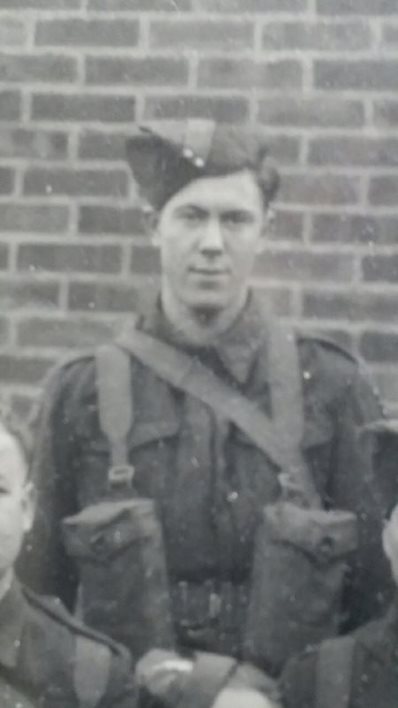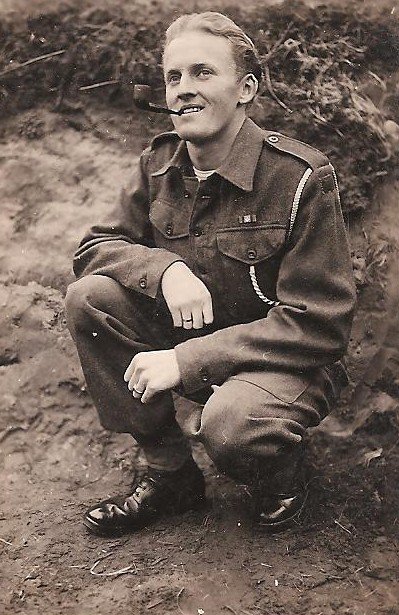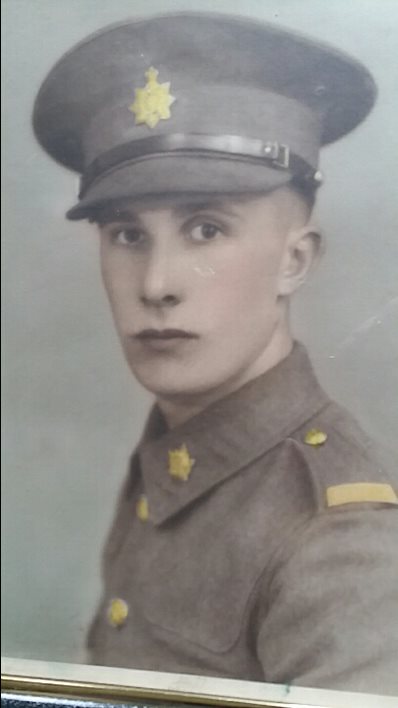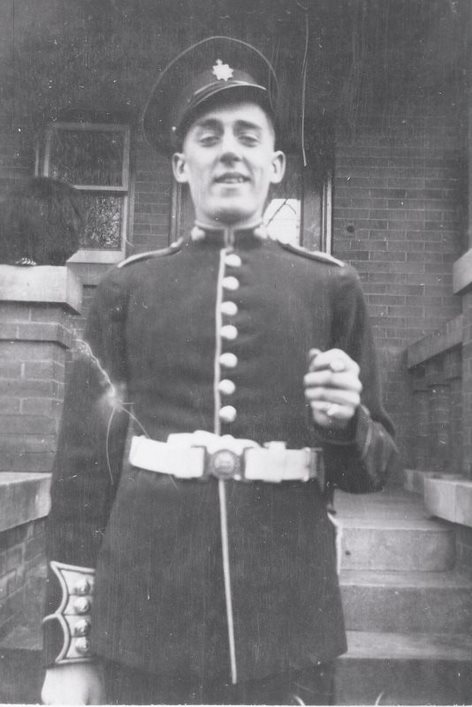
Four young men from Toronto enlisted with the Royal Regiment of Canada (RRC). They would go on to train together, fight together at Dieppe and were ultimately taken as Prisoners of War (POW) together. They endured harsh conditions as POWs and survived, but they carried haunting memories of the experience for the rest of their lives. Following their liberation, all four men returned to Toronto to build their lives, and were once again reunited as police recruits for the Metropolitan (Toronto) Police Service.
Learn more about the Prisoners of War through personal stories told in their own words and audio interviews with their sons.



Correction: During this interview, Mr. Olver misspoke about dates for the death marches. The POW death matches began in the January or February 1945. In Mr. Olver and Cam Brown’s situation, it started in February 1945. An incorrect date was stated in the recording.

After the surrender, all four of these men were loaded on cattle cars and taken to the same German Prisoner of War camp- Stalag VIIIB in Lamsdorf. This was the largest camp in Germany and contained many prisoners who had fought earlier at Dunkirk. Some families received no news about their sons until letters arrived home in October, three months after the Raid.
Conditions in the camp were harsh and prisoners were shackled from October 1942 to December 1943. Toilets were referred to as “forty seaters” with open air seats situated on either side of the room. Lack of food was a constant concern. Canadians received coffee in Red Cross packages which they would trade with Americans who were given tea, and they would then reuse the same tea bag over and over again. There were no showers so prisoners would venture out to take advantage of the rain. There was no privacy and barracks were searched regularly with belongings tossed outside.
The Red Cross sent musical instruments into the camp for the prisoners to entertain themselves. Maps, papers and money were also concealed inside the skins of the drums and never found during the searches conducted by the Germans.
After some time, a few prisoners were transferred to another camp where they worked as laborers doing farm work and other duties.
The Death Marches began in the winter of 1945 as Russian Troops were were advancing closer to Berlin and Germany was losing the war. The prisoners marched over 500 miles each day in the winter snow for four months. They searched for any food they could find while on the march, as very little food was provided. At times, their own planes shot at them, thinking they were German soldiers. Prisoners took cover in ditches while bullets from Allied planes sprayed both sides of the ground around them. During one of these attacks, Campbell Brown and a few others were able to escape while the German soldiers were preoccupied.
After spending 33 months as prisoners of war, Olver, Donald and Surphlis were liberated by Allied forces in April of 1945.
Once they returned to England, it was found that the four men had lost an average of 60-70 pounds each due to poor nutrition and illness. Following the liberation, many prisoners of war spent time in hospitals recovering from illnesses that occurred during their captivity.
After the war, Olver, Surphlis, Donald and Brown returned to Canada and went back to life in Toronto.
Without coordinating their plans, all four men chose to join the Toronto Police in 1945. They were shocked to see each other at the Police Academy for the first time since the war. Each of the four men went on to have policing careers that spanned more than 30 years.
The four friends rarely spoke of their time as Prisoners of War, of Dieppe or of the horror they endured there and in the three years that followed.
Each year, they would meet at the Metro Toronto Police War Veterans Dance and kept in touch over the years. On occasion, they returned to Dieppe for commemorations and to honour the fallen who had made the ultimate sacrifice.
Campbell Brown was the last member of the group to pass away in 2020 at the age of 98. He was also the last surviving member of the regiment that had landed at Blue Beach.
Despite the unspeakable horrors of Dieppe, the years at the Prisoner of War camp and the haunting memories that they were left with, these four men developed an unbreakable bond and a friendship that lasted a lifetime.